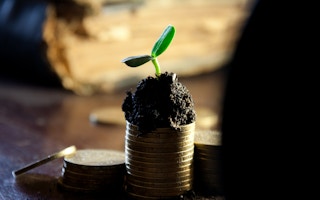In 2018, China issued just over US$30 billion worth of green bonds, putting the country in second place globally behind the United States bond issuance.
And how China did this is as important as what it achieved, if other nations are to learn from the country’s innovative practices and fight climate change with green finance.
For a start, China’s institutions have not shied away from breaking with tradition. “The People’s Bank of China was the first central bank to accept green bonds as collateral when banks borrow from it. To encourage banks to use green finance, it also offers a discount price on its lending for that. These are very clear incentives for banks to hold green bonds,” explained Sean Kidney, chief executive of the Climate Bonds Initiative, an international non-government organisation that works to mobilise debt capital markets for climate solutions.
The country’s provinces are also exploring and evaluating different types of incentives. “In Jiangsu, loans for green finance have their interest rates subsidised by 30 per cent, paid for by the central government,” he said, adding that these experiments contributed to the huge green bond market seen in China today.
Kidney will be sharing his expertise in green finance matters at the upcoming Macao International Environmental Co-operation Forum and Exhibition (MIECF).
China is also shaping the global green bond market in other ways. This month, its officials will meet their counterparts from the European Union, Canada, Japan and India to consider how to streamline standards in the market.
Progress at this meeting will go some way to assuage concerns around the alleged lack of transparency and traceability of green bonds, and the absence of clear and binding standards around how funds raised are used.
“You should be able to buy green bonds from anywhere in the world and have peace of mind that the projects they finance will meet the same high environmental standards. Having common standards will also minimise the blocks to capital flowing to different markets,” said Kidney to Eco-Business.
A greener Belt and Road
The annual MIECF, to be held at the Venetian Macao from March 28 to 30, is hosted by the Government of Macao Special Administrative Region of the People’s Republic of China, and has Promoting Ecological Civilization and Green Development as its theme this year.
Kidney noted that the conference’s theme is fitting as China has a unique opportunity to influence urban environmental policy in Asia through its ambitious Belt and Road initiative. “If the Export-Import Bank of China cuts all loans to fossil fuel investments in the initiative, and instead doubles or even triples its loans to clean energy, rail and electric vehicle investments, that will have a significant impact,” he said.
Kidney added that while green trade fairs are starting to take off in Europe and China, there has not been one focused on the Belt and Road project. “There has been nothing like that so far for the Belt and Road initiative. It would be easy to organise and would allow Chinese companies to present their wares to representatives from other Belt and Road countries who want to learn more about how to grow a green economy.”
Such efforts would also help China to fulfil its pledge to make the Belt and Road initiative environmentally friendly, he said, adding: “We don’t have much time left to fix our climate change problem.”
Achieving ecological civilisations, referring to a central concept of this year’s MIECF in which human development and natural conservation go hand in hand, is not something that can be left for another few years, said Kidney.
“
You should be able to buy green bonds from anywhere in the world and have peace of mind that the projects they finance will meet the same high environmental standards.
Sean Kidney, chief executive, Climate Bonds Initiative
A necessary transition
This year’s MIECF is especially significant because it is the first one to be held after the Intergovernmental Panel on Climate Change’s sombre warning last year that the world has just 12 years to drastically reduce its greenhouse gas emissions to avoid catastrophic global warming, Kidney said.
“We need to think of the upcoming conference as the first year of a 12-year deadline that we have. If we don’t succeed, we can expect to sea level rises of between two and four metres, a tripling in the intensity of cyclones and typhoons, big storm surges on the back of those, and substantial flooding becoming the norm every year, especially in the Bay area, all within the second half of this century,” he said.
But Kidney remained positive. “We already have the technologies we need, such as renewable energy and low-carbon transport systems, and we are already applying them.”
He concluded: “We need to shift our economies onto a green path much more quickly, and I remain convinced that we can make that transition.”
This year’s MIECF features Mr Sean Kidney and other experts as speakers. To hear more from them, register for the Macao International Environmental Co-operation Forum & Exhibition (MIECF) held from March 28 to 30 at the Venetian Macao.
With an exciting line-up of an international conference, exhibition, business matching and networking activities, 2019MIECF offers access to opportunities from the Pan-Pearl River Delta Region, Greater Bay Area, “Belt and Road” area, European and Portuguese-speaking countries and beyond. At the Green Forum, speakers will discuss topics such as green finance and technologies, while the Green Showcase will feature innovative services, products and technologies for the construction and other industries.












